Kuzco is a specialized service for LLM large language model computing power mining networks. This year, it was selected for the Crypto Startup Accelerator (CSX) fall accelerator program launched by a16z in New York. Projects selected for this program will receive at least $500,000 in investment from a16z over 8 weeks, along with guidance and support from the a16z operations team.
Written by: J1N, Techub News
Introduction
Today, I will share about Kuzco, a specialized service for LLM large language model computing power mining networks. This year, it was selected for the Crypto Startup Accelerator (CSX) fall accelerator program launched by a16z in New York. Projects selected for this program will receive at least $500,000 in investment from a16z over 8 weeks, along with guidance and support from the a16z operations team. Currently, there are about 2 weeks left until the end of this program.
The Kuzco project is still in a very early stage and belongs to the GPU computing power network field, similar to io.net, but is taking a different development direction. io.net has already completed user airdrops earlier than Kuzco due to strong financial support and background, and has successfully launched on mainstream cryptocurrency exchanges such as Binance, Coinbase, and Bybit, gaining greater market exposure.
I personally participated in mining with io.net, and honestly, the whole process felt like letting the graphics card "earn money while lying down." You just need to keep the graphics card idle, and it automatically generates income, with minimal electricity costs. Each mining machine consumes only 1.2 kWh per day, totaling just $10.8 in electricity costs over three months. Adding in the depreciation of second-hand graphics cards and miscellaneous internet tools, the total cost can be easily managed within $100 to $200. Ultimately, I earned $4,000 in profit, which makes it seem like this project is an "air castle" that spirals upward with the left foot stepping on the right.
Subsequent declines in token prices have validated this point. Additionally, I compiled an article titled "Price Plummets 70%: How the AI Computing Power Rental Bubble Burst," which further reflects the bubble in the AI computing power market. Whether it's the rental market prices or the decline in project tokens, both are the market correcting the true value of these projects. This price adjustment aligns with market principles, indicating that future developments may trend towards a more rational direction.
Kuzco's mining mechanism is significantly different from the previously popular project io.net. io.net is an "air castle," easily yielding dozens of times returns by simply keeping the graphics card idle, with the actual value supporting it not being obvious. In contrast, Kuzco is more down-to-earth and has the support of a16z. I spent several weeks rigorously testing different configurations of mining machines, including single-card, multi-card, and various system setups. Through these practical operations, I will share these hands-on experiences to help everyone understand a mining project that provides real value to users, rather than relying on a bubble-supported false prosperity.
Specialized Service for LLM Large Language Model Computing Power Mining Network
Kuzco is a decentralized GPU network within the Solana ecosystem, aimed at utilizing idle GPU resources from individual users to provide efficient and cost-effective computing power services for large language models (such as Llama3, Mistral, Phi3). Users can access these models through an OpenAI-compatible API. Kuzco's distributed architecture can integrate idle computing power resources to run large language models while incentivizing miners who provide computing power through a reward mechanism.
Project Operation Status

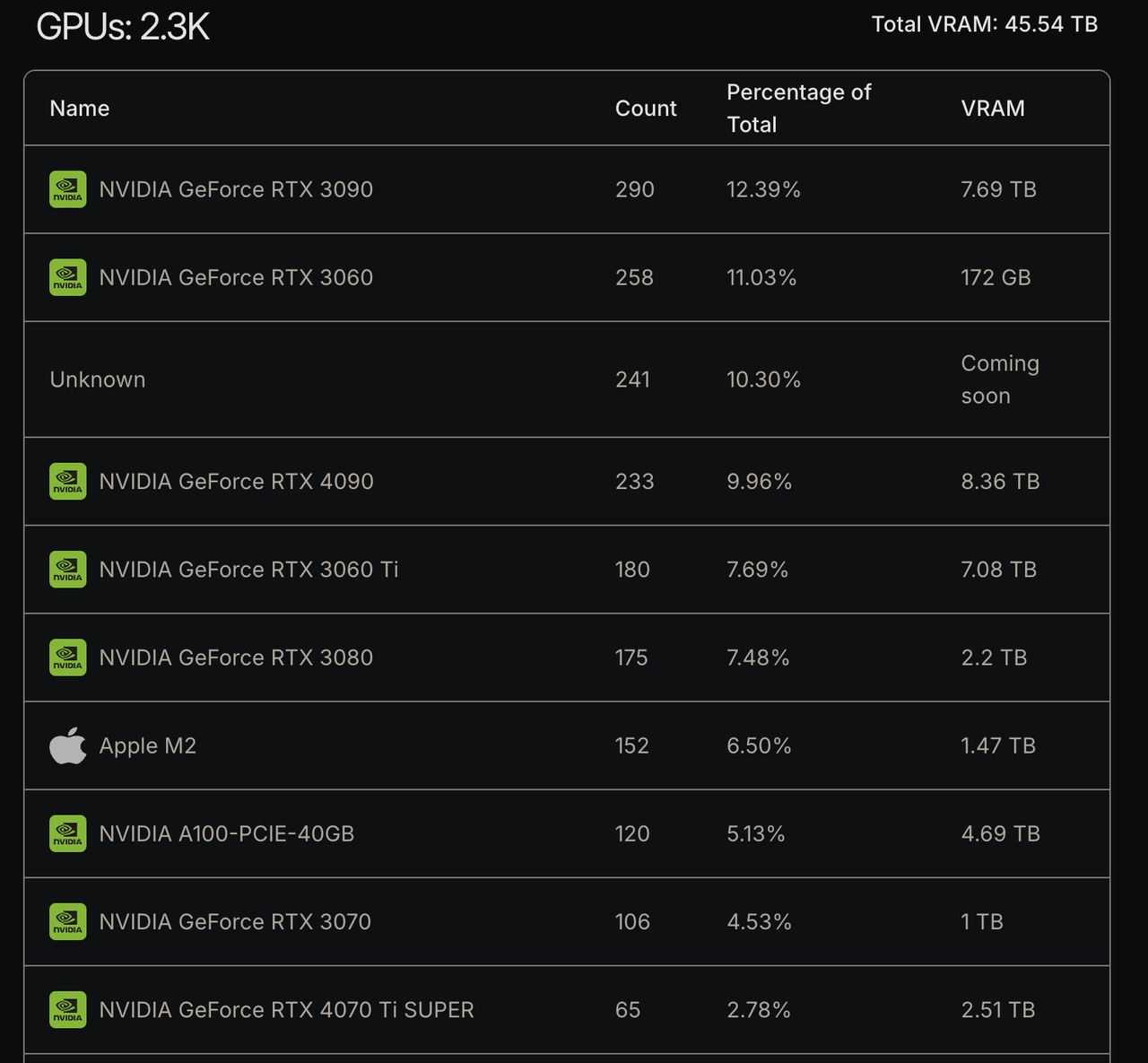
As of October 21, the Kuzco project has 2,000 online GPU mining machines, peaking at 6,000. The most commonly used GPU models include 3090, 3060, etc. Miners currently receive KZO Point rewards, but these points cannot be converted into cash yet, and the project has not announced a token economic model. I speculate that as the a16z accelerator program progresses, there may be more new developments and updates for this project in the future.
How to Deploy
Official Hardware Requirements
The Kuzco project can run on Mac, Windows, and Linux operating systems, supporting various hardware configurations. The minimum system requirements are 16GB of RAM, 30GB of available disk space, and at least 10MB/s of network bandwidth. Kuzco supports NVIDIA (N cards) and AMD (A cards) graphics cards with at least 8GB of video memory, with the minimum requirement for ordinary users' N cards being GTX750, while most professional computing power graphics cards are supported.
However, I do not recommend using A cards for computing power mining, as AMD graphics cards have poor compatibility, especially in AI tasks compared to N cards. If you must use A cards, you need to check the official compatibility support list. In the AI field, I must say: AMD, NO!
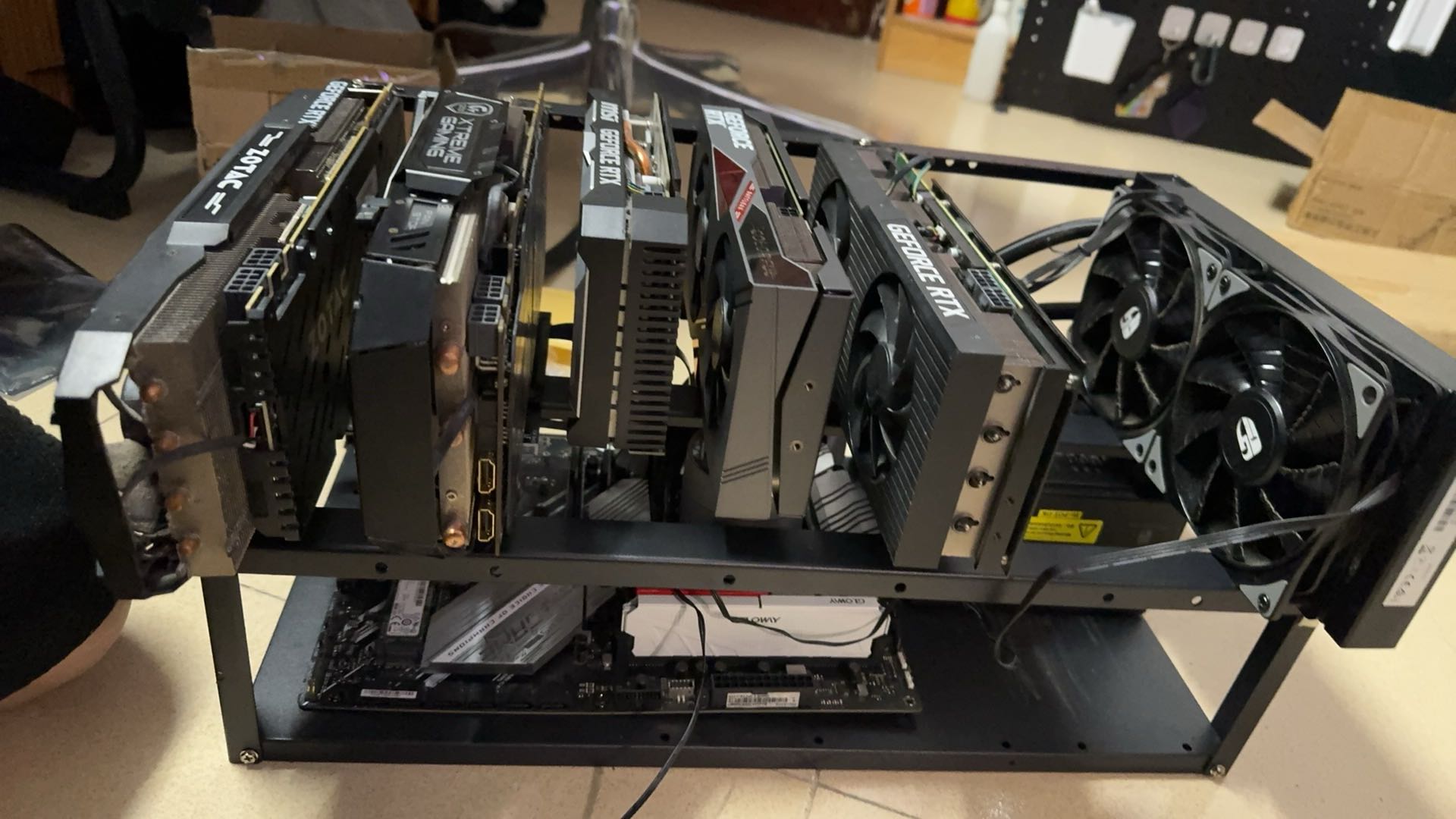
My five-card platform, motherboard Huazi Z490
I tested the mining efficiency of several hardware configurations, but due to network fluctuations, the efficiency may vary.
- GTX1070: 20 tok/s
- RTX2060: 30 tok/s
- RTX2070S: 40 tok/s
- RTX3080: 80 tok/s
- RTX4060Ti: 50 tok/s
- RTX4070S: 70 tok/s
- M2: 20 tok/s
- M3: 30 tok/s
Unit: Avager Tokens / Second (average tokens processed per second)

Real-time monitoring of mining machine operation status
Deployment Methods
Kuzco provides a client application that users can download and use to start mining, but this method can sometimes be unstable, may drop connections, and will not automatically restart. I recommend a more stable approach using a Linux system or the Windows Subsystem for Linux (WSL) environment to start mining via command line (CLI) or Docker containers. If you need to use multiple graphics cards, you can specify a certain GPU for multi-card mining in Linux through Docker containers. For example, to specify GPU0: "docker run --rm --runtime=nvidia --gpus '"device=0"' -d kuzcoxyz/worker:latest --worker workerid> --code code>", which will start multiple GPUs.
When mining with multiple cards, please pay attention to the following hardware aspects:
Power Supply: The power supply is crucial and should not be skimped on. It is recommended to purchase according to the standard "1 RMB = 1 Watt" and to use a gold-rated power supply if possible. Choose a power supply between 1500W to 2000W based on the number of graphics cards, or use multiple power supplies, but multiple power supplies require additional startup lines connected to the motherboard to function properly. Otherwise, they will not start normally.
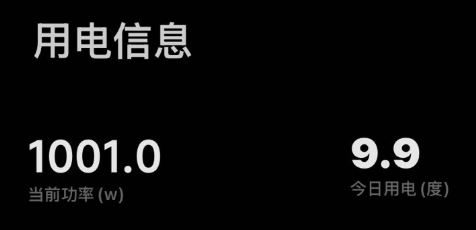
Power consumption information
Cables: In high-power environments, power cables can easily be damaged, so I recommend using higher quality power cables. Additionally, different brands of modular power supplies use different cable interfaces and are not interchangeable. Using cables from different brands may cause equipment damage or burning. Therefore, cables must match the brand of the power supply to ensure compatibility.
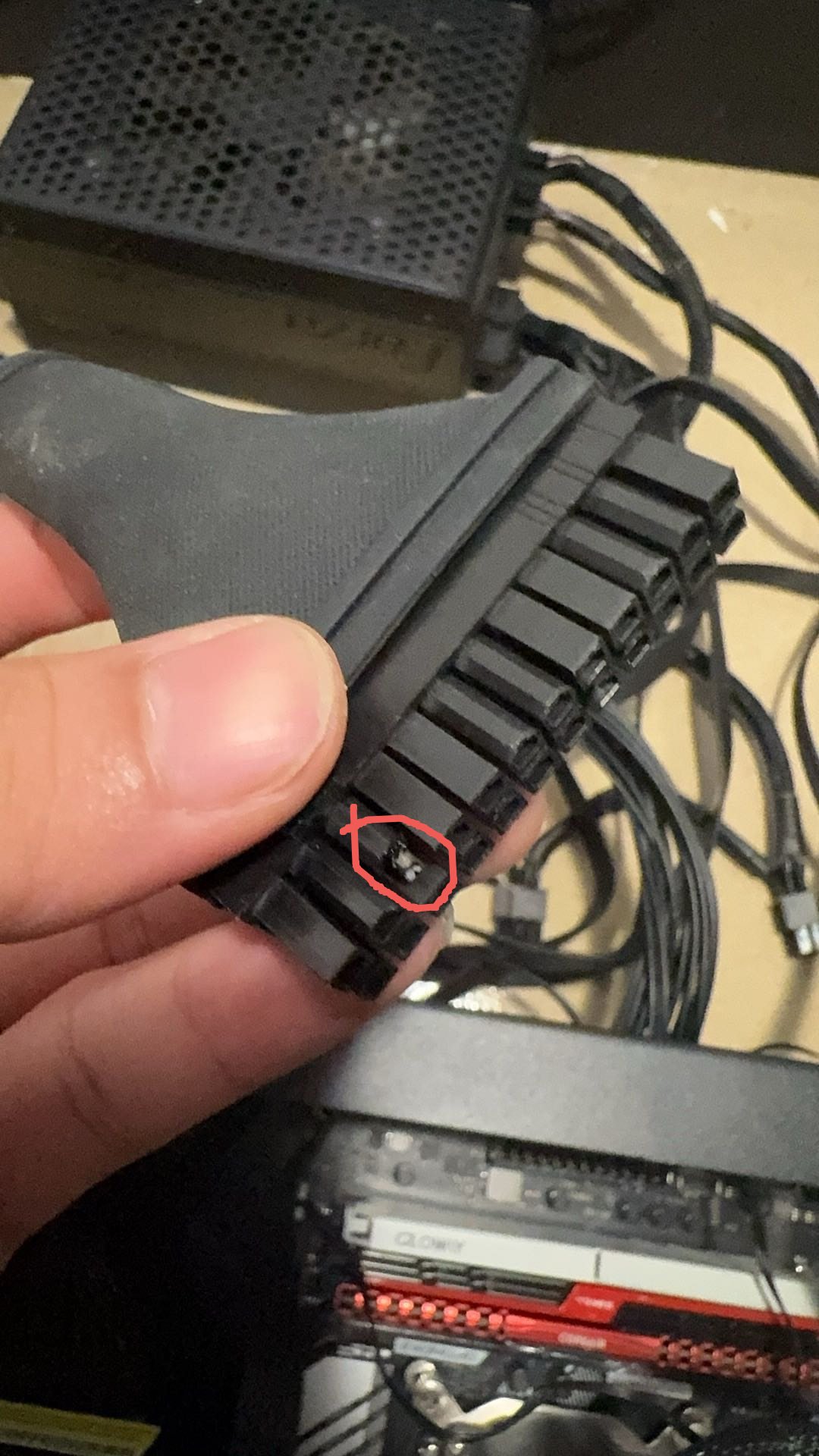
Damaged power cables due to aging
Motherboard: Each channel on the motherboard (whether x1, x8, or x16) can only support one graphics card. For example, the number of channels determines how many graphics cards can be supported. The B85 motherboard, popular during Ethereum mining, is a good choice.
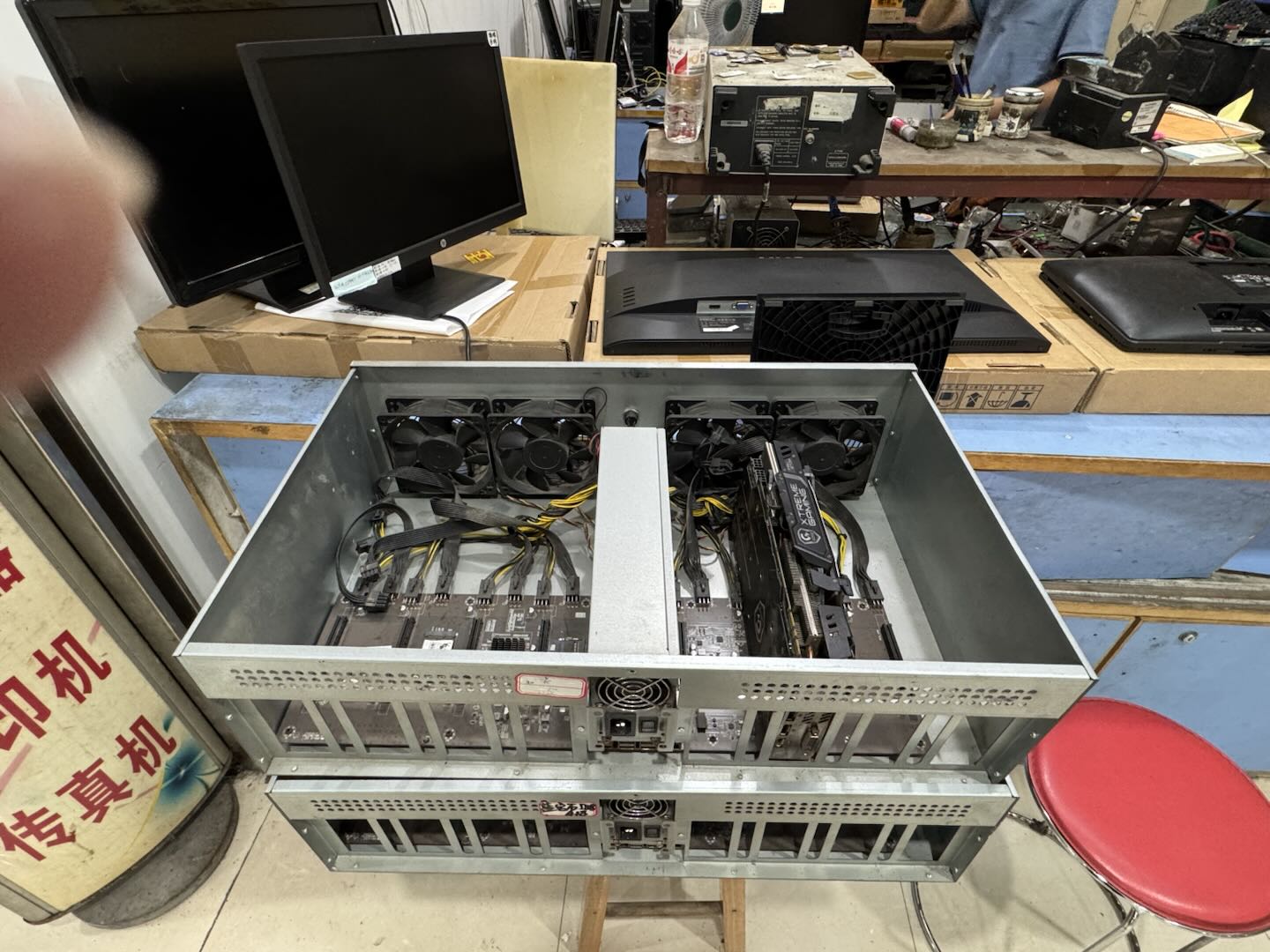
My B85 platform from participating in Ethereum mining, now scrapped
CPU: Since multiple tasks need to be processed simultaneously, the more threads the CPU has, the better. When starting mining with Docker, it will initially consume a lot of CPU resources. If using multiple graphics cards, they must be started one by one in order; otherwise, the system may crash or freeze.
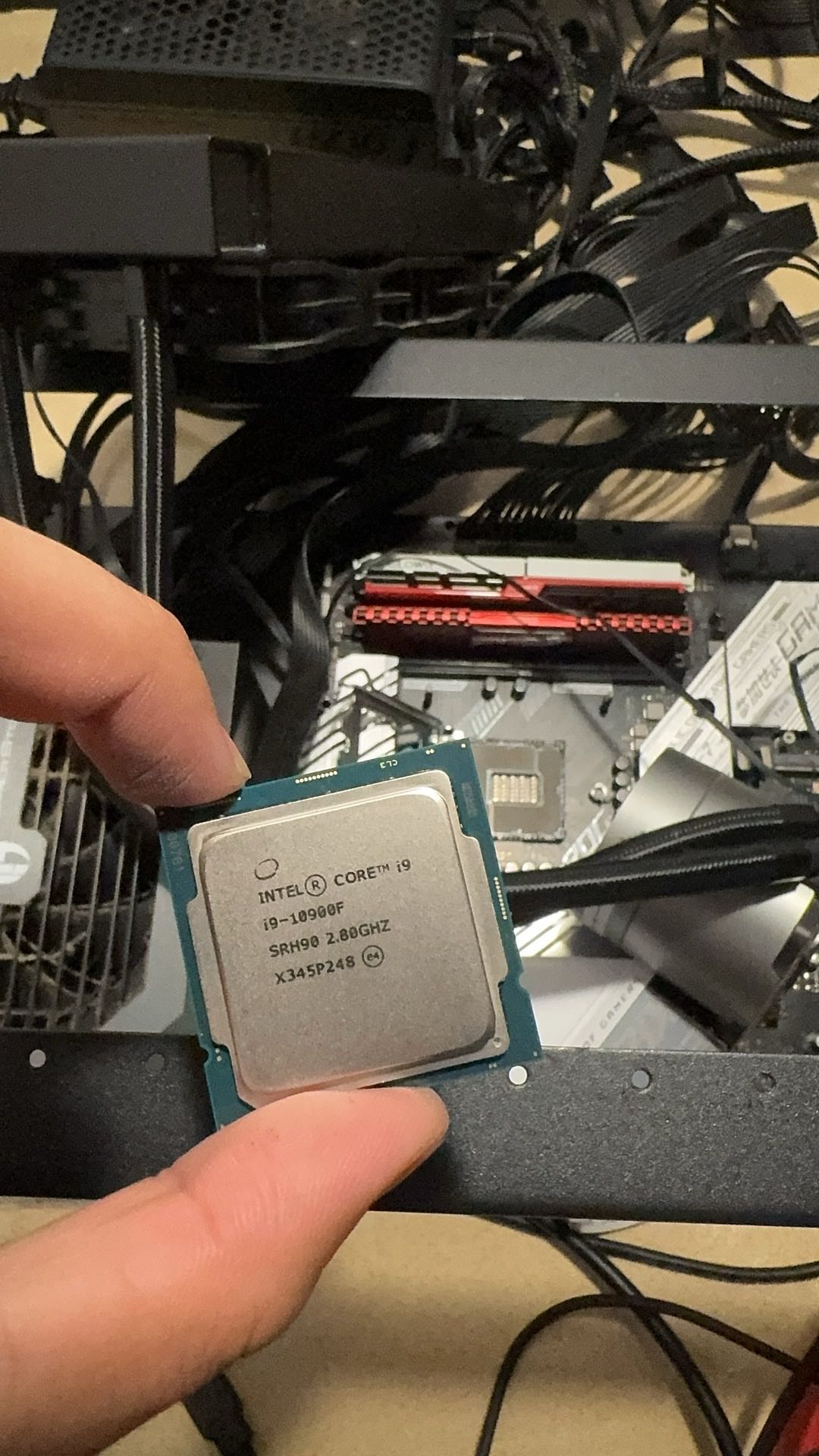
Young people should go for i9, no need to stick to e5 for appearances
Graphics Card: A single Docker process occupies about 6 GB of video memory (the official documentation states 8 GB, but 6 GB is sufficient to run). If the graphics card has 12GB of video memory, you can run two Docker processes on one graphics card. During mining, the workload of the graphics card will occupy 50% to 90%, and the temperature of the graphics card should be kept below 85 degrees for it to be reasonable and safe.
PCIE Adapter Cable: It is recommended to use an x1 to x16 PCIE adapter cable, with x1 plugged into the motherboard and x16 plugged into the graphics card. If using 40 series graphics cards, an x16 extension cable is required.
Network Connection Quality: The quality of the network connection can significantly impact mining efficiency. I found that using network nodes in Singapore received more computing power tasks than those in Hong Kong, meaning that choosing better network nodes can improve mining efficiency.
If a fault occurs during the mining process, the first step is to check the status of the motherboard and software. If the issue is at the software level, you can determine the problem by checking the terminal error messages, which may indicate a memory error that requires a computer restart; or it could be due to an official document update, where the local mining machine has not updated the code in time, in which case the solution is to change the node or update the code.
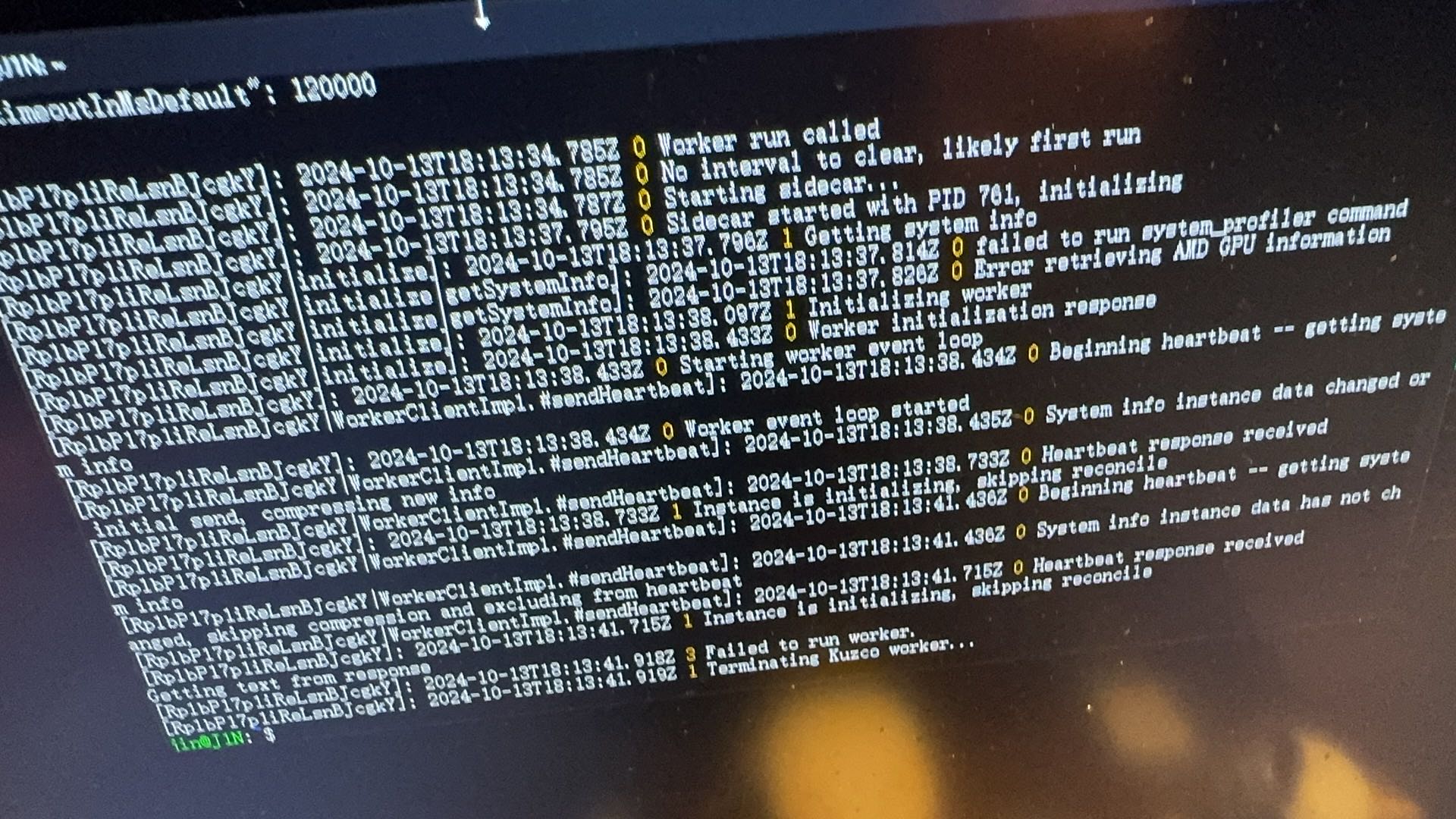
Runtime Error
At the hardware level, if the mining machine fails to boot, first check the fault lights on the motherboard. Taking an ASUS motherboard as an example, the most common issue is the VGA white light, which indicates a problem with the graphics card power supply. In this case, you can try reseating the PCIe and graphics card power cables. However, sometimes the white light may illuminate, but the machine still operates normally.
Summary
Although I referred to io.net as an "air castle," implying that its market value is severely overestimated, it indeed successfully raised $40 million with a valuation of $1 billion. However, after io.net went live, many imitation projects emerged, and the products and backers of these imitations could not withstand rigorous scrutiny, indicating that io.net's success is not easily replicable by every project.
Based on this observation, I have been searching for a mining project with more practical value. Ultimately, I discovered Kuzco. Kuzco has received incubation and support from a16z, which enhances its credibility and potential. Additionally, Kuzco's mining mechanism genuinely provides computing power services through GPUs.
More importantly, from a macro perspective, the field in which Kuzco operates—large language models (LLMs)—is currently the most widely used AI product among the public, with countless people using these models globally every day, and these models require immense computing power support. I believe that providing computing power for such a vast demand is not only meaningful but also has real commercial value; therefore, Kuzco is a project worth paying attention to.
Furthermore, the cost of participating in the GPU computing power network is relatively low, especially since the prices of 40 series graphics cards in the second-hand market are stable, resulting in low depreciation costs, making them worth purchasing. However, I advise against renting graphics cards, as the rental costs are significantly higher than buying second-hand cards. At the same time, Kuzco's airdrop incentives are unclear, and recklessly renting cards on a large scale poses a higher risk.
Moreover, the mining machine itself has high practical value; it can not only be used to mine Kuzco but is also more stable and reliable than directly investing in high-risk altcoins. Due to the good scalability of mining machines, they can be used to mine other GPU projects or serve as blockchain node validators, running scripts and services to generate additional income. This means that even if mining Kuzco is no longer an option, the mining machine can still continue to generate value.
Finally, many people ask how much profit can be earned from mining in a day. There is no definitive answer to this question; aside from the project team, no one can accurately know the final earnings. The returns from mining have a high degree of uncertainty, and while there may be high profits, they could also fall short of expectations, making it impossible to determine in advance how much money can be made.
免责声明:本文章仅代表作者个人观点,不代表本平台的立场和观点。本文章仅供信息分享,不构成对任何人的任何投资建议。用户与作者之间的任何争议,与本平台无关。如网页中刊载的文章或图片涉及侵权,请提供相关的权利证明和身份证明发送邮件到support@aicoin.com,本平台相关工作人员将会进行核查。




